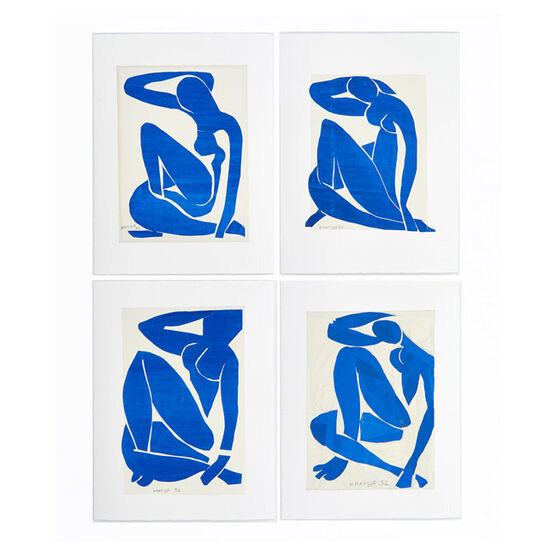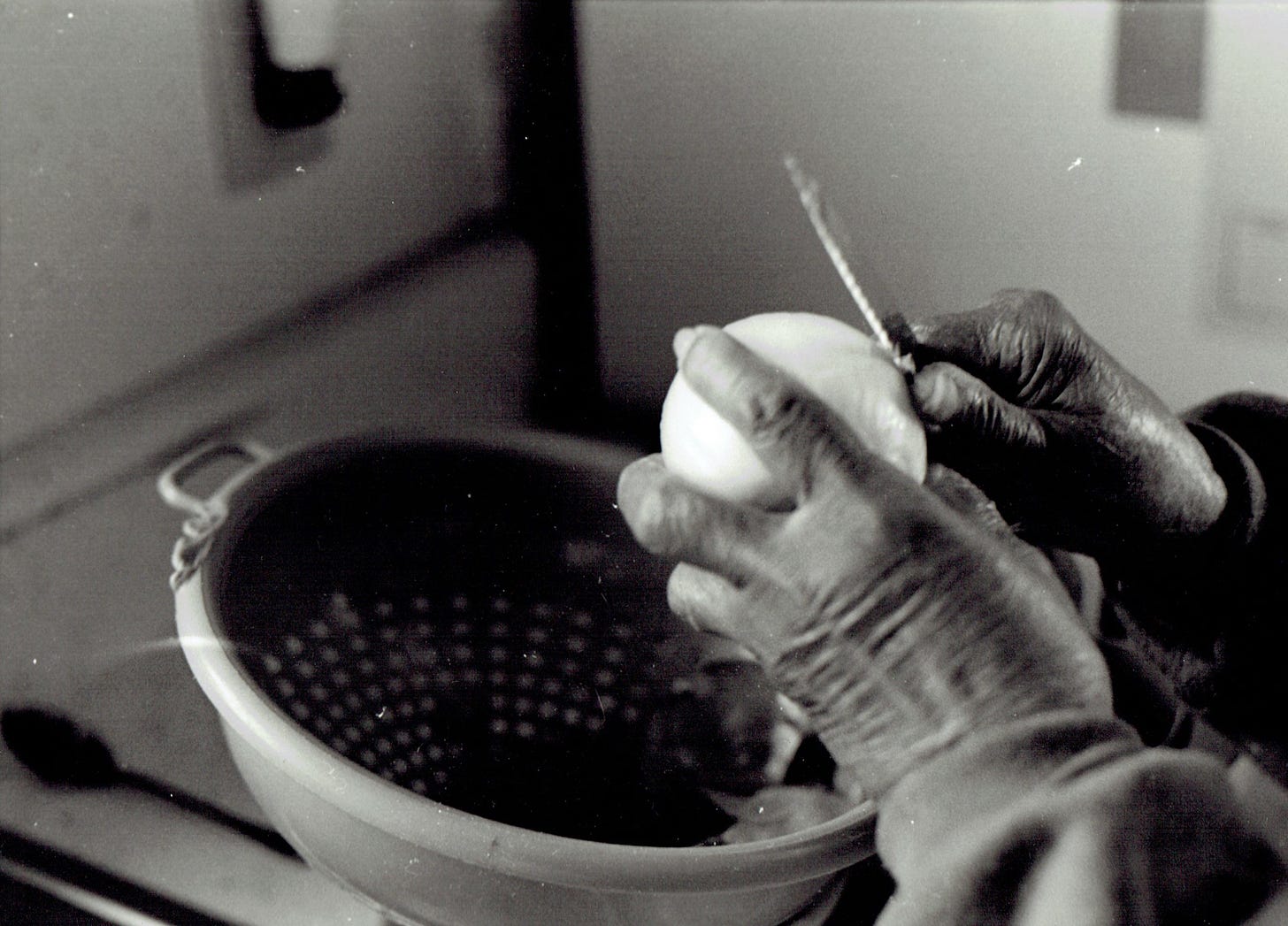The Sunday letter is coming to you today, Monday. I had hoped to do my final edits yesterday morning, but a touch of food poisoning had a different plan in mind. Thankfully, I’ve rested and recovered (thank goddess for herbal teas!).
I wish you good health and sincerely appreciate your patience.
A song to set the vibe:
Dear relatives,
In the corner of my apartment sits a painting I love but have yet to hang. It is a large print of Blue Nude 1 by Henri Matisse. It is one of the best things I have found at a thrift store, though not an original painting. The work has character, including a few slight bends in the paper—though barely detectable close-up. When I look at it, I feel inspired. The cobalt blue in the image pops, signaling a bold and welcoming feeling; a color that symbolizes imagination and creativity.
I honestly don’t have a good reason why this painting still sits on the floor. After a year in this apartment, we haven’t put up any pictures, art, or other place-making items. There are a few exceptions, of course. The (thankfully removable) stickers that my son has strategically placed all over the walls help to spruce things up. We have plants, too. The green or their delicate bodies add oxygen and life. Other items in my shared space remind me to breathe, and books are at the top of my mind. I’ve even written about my beloved book collection and nurturing home and hearth in a previous letter.
There is something about the location of the painting that feels so palpable. At this same time, I am keenly aware of the impermanence. One could argue that my subconscious is speaking through the choice to leave there, to let it remain.
Anyway, I digress. The painting, I hope, serves as a way into our reading for the week by novelist and professor Jesmyn Ward. “My True South: Why I Decided to Return Home,” was first published by Time Magazine in July 2018, and is an essay all about the joy and challenges of going home. For Ward, a return to Mississippi deserves more than a “toothless answer.” Instead, she accounts for the history of Mississippi, the place of her birth, and its legacy in the South and throughout the nation. Ward does not shy away from the presence of racism and colonization as an experience that permeates the consciousness of every black and brown person. She shares stories from her family history along with details about lynchings, images that have made the South so notoriously known and feared.
Similar to other BIPOC writers, the body plays a central role, both in terms of relating to place and nature and in the experience of racialized violence. The essay seeks to reckon with the idea of home as much as it serves as a welcome home. Ward writes, “This is the answer with teeth. The reply that demands nuance, introspection, and ruthless clarity, enough to see that this can be another place.” Going home is, indeed, a nuanced and complicated thing.
As an Afro-Indigenous person, I consider it important for me to know whose land I am on. I was born and raised on land that was originally stewarded by the Shawnee, Miami, and Kickapoo relatives—communities that have been removed, or worse, nearly wiped out through ongoing genocide. Now, much of the landscape I see outside my window is rendered for industrial agricultural use. All land is Indigenous land, and honoring this is essential to the work of reparation and rematriation movements. The soil in my home place is storied, like anywhere else. And the stories eventually seep in through the breath, into the body.
The land shapes us, and we shape the land. For many, returning home can mean re-entering a site of trauma, where each breath feels weighted with overwhelming memories. The question is, how can we repair the original wounds of the past? How can a connection to the land lead to a more embodied future?
In the comments, I’d love to hear your thoughts on how your connection to your homeland or another significant place has shaped or changed you in some way. Whether you reside in a rural or urban area, please share your observations.
With gratitude,
Christian
Noticing
After feeling the whirlwind effects of the last five years, I am grateful for this season that allows me to witness the changing leaves. Every day, I notice the gorgeous yellows, oranges, and reds dance in the golden autumn light. This feeling reminds me of growing up in the Midwest (where I currently reside). The season has a similar texture now as it did then, and there is a palpable familiarity that I haven’t felt in a long time.
Reading
Since October is a long month, the next two Sunday letters will be devoted to sharing a poll, along with the results, which will include questions related to content and community. On the last Sunday of the month (October 29th), we’ll dive into Between the World and Me, the 2015 nonfiction book by Ta-Nehisi Coates.
Creating
By the end of the month, I’ll be halfway through the editorial calendar that I created for myself this summer. As such, I am considering themes to focus on for Q1 and Q2 of 2024 (hence the forthcoming polls!). I’ve enjoyed choosing one piece to reflect on each week. And the monthly essays have been a nice way to weave the weekly readings together.




